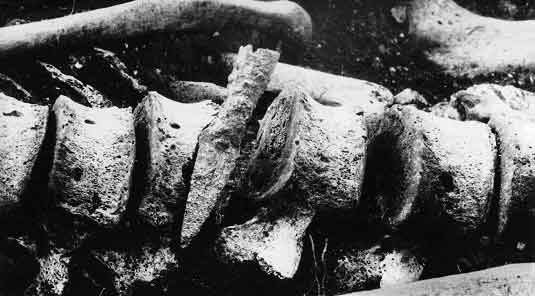The bolt-shooter: accuracy, range and effects (Extract) |
|
Dramatic archaeological evidence comes from the Claudian invasion of Britain which began in AD 43, during which the future emperor Vespasian commanding the Second Legion fought thirty battles, defeated two tribes and captured more than twenty hill-forts and the Isle of Wight. Archaeologists believe that they have located evidence of his artillery in action at two hill forts in Dorset. Artillery victim at Maiden CastleIron bolt head from a Roman catapult lodged in the spine of a Briton buried at Maiden Castle, Dorset (Wheeler 1943, Plate LVIIIA and page 352, Skeleton P7A “adult male, aged 20-30 years”). The bolt appears to have travelled uphill and entered around his belly-button. The 10-11mm internal diameter of the socket is too small for a three-span bolt-shooter (and for a thrusting spear) and was probably shot from a Xanten-Wardt size of catapult (section xx below). The large numbers of socketed bolt heads found on the Hod Hill site since the 19th century and now in the British Museum have been recorded and analysed by Professor Bill Manning (Manning 1985). A large percentage of them have this small diameter of socket, as have the heads recorded from Vindolanda by Robin Birley, and those from many other sites; a bolt head of this size has been found in the current excavations at Ham Hill, Dorset. Compare this leaf-shaped blade with a similar one from Hod Hill in figure 15 right and the comments in the caption there. (Skeleton now in the Dorset County Museum, Dorchester. Excavation photograph copyright The Society of Antiquaries of London.) |
|
Click here to download the full article |
